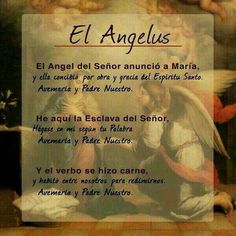
We fly to thy patronage, O holy Mother of God; despise not our petitions in our necessities, but deliver us always from all dangers, O glorious and blessed Virgin. Amen.

The Magnificat, taken from Luke's Gospel (1:46-55), is the Blessed Virgin Mary's hymn of praise to the Lord. It is also known as the Canticle of Mary in the Liturgy.
The Hail Mary Prayer
Hail Mary, full of grace,
The Lord is with thee.
Blessed art thou among women,
and blessed is the fruit of thy womb,
Jesus.
Holy Mary, Mother of God,
pray for us sinners,
now and at the hour of our death.
Amen.
"Hail, full of grace, the Lord is with you" (Lk 1:28)
"Blessed are you among women,
and blessed is the fruit of your womb"
(Lk 1:42).
From the 16th to the early 20th century, the structure of the rosary remained essentially unchanged. There were 15 mysteries, one for each of the 15 decades. In the 20th century the addition of the Fatima Prayer to the end of each decade became more common. There were no other changes until 2002 when John Paul II instituted five optional new Luminous Mysteries.

The Angelus (Latin for "angel") is a Christian devotion in memory of the Incarnation. The name Angelus is derived from the opening words: Angelus Domini nuntiavit Mariæ ("... the Angel of the Lord declared unto Mary ...") and is practiced by reciting as versicle and response three Biblical verses describing the mystery; alternating with the salutation "Hail Mary!" The Angelus exemplifies a species of prayers called the prayer of the devotee. The devotion was traditionally recited in Roman Catholic churches, convents, and monasteries three times daily: 6:00 am, noon, and 6:00 pm (many churches still follow the devotion, and some practice it at home). The Angelus is usually accompanied by the ringing of the Angelus bell, which is a call to prayer and to spread good-will to everyone on Earth. The angel referred to in the prayer is Gabriel, a messenger of God who revealed to Mary that she would conceive a child to be born the Son of God. (Luke 1:26-38).
...are the Assumption (Aug. 15), the Birthday of Our Lady (Sept. 8), the Immaculate Conception (Dec. 8), the Purification (Feb. 2: see Candlemas), and the Annunciation or Lady Day (Mar. 25).
[From "Mary, the Mother of Jesus". In The Columbia Encyclopedia, Columbia University and Paul Lagasse. New York: Columbia University Press, 2015.]
Alma Redemptoris Mater
Angelus
Ave Maria
Ave Maris Stella
Ave Regina Caelorum
Fatima Prayer
Magnificat
Memorare
Regina Coeli
Rosary
Salve Regina
Sub Tuum Praesidium
Three Hail Marys

Above: Pamphlet from Steubenville Press available at Amazon.com.

"Mary, Mother of Jesus, give me your heart so beautiful, so pure, so immaculate, so full of love and humility that I may be able to receive Jesus in the Bread of Life, love Him as You loved Him and serve Him as You served Him in the distressing disguise of the poorest of the poor. Amen."